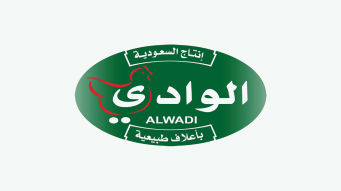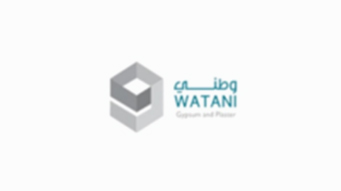
What is the Kingdom’s National Water Strategy
The Kingdom’s National Water Strategy is a comprehensive water strategy. That integrates trends, policies, legislation, and practices in the water sector at the national level. Developed by the Ministry of Environment, Water, and Agriculture. The main objective is to meet the main challenges and restructure the sector. The work includes many elements. Including stakeholder engagement and assessment of the current status of the sector across a range of dimensions such as water demand, water resources, sector operations. And enabling factors, and identifies the nature and size of the gaps between supply and demand, in addition to the sector’s economics under different scenarios.
Water is one of the most important axes of economic and social development. As it is essential for meeting human needs, managing the environment, and ensuring the sustainability of economic development. Despite the importance of water, the Kingdom faces major challenges due to the unsustainable use of water resources. As well as the limited non-renewable groundwater reserves, which are experiencing rapid depletion. Under the arid climatic conditions, renewable water is scarce, noting that the high demand for water in the agricultural sector exacerbates the problem of water scarcity in the Kingdom. Water and sanitation services in the urban sector represent a high cost to the state, and service levels need to improve quality, and the sector also requires improving institutional conditions and governance mechanisms.
To coincide with the end of the Saudi Water Forum, we publish in Carewater welfare the National Water Strategy Programs. Believing in the role of the private sector in the renaissance of our country. and sustainable conservation of its resources.
Assessment of the current situation
An assessment of the current status of the water sector in the Kingdom was conducted by adopting an integrated framework that includes many contents that cover critical aspects in the sector. The evaluation also relied on many previous studies, personal interviews with key stakeholders, and benchmarking with international models.
And given that the Kingdom has a limited reserve stock of non-renewable exploitable groundwater, and has low re-compensation rates (2.8 billion cubic meters in the Arabian Shield).
The water requirements in the Kingdom (which were estimated in 2015 at about 24.8 billion cubic meters) are witnessing a steady annual increase of 7%. The agricultural sector represents the largest consumer of water in the Kingdom, with 84% of the total water demand. The use of water in the agricultural sector reflects an environmental challenge due to its dependence on non-renewable resources, which represent 90% of the total water supplied to the sector.
Current water challenges
The high use of water in the agricultural sector is due to gaps in water sector policies, legislation, and general shortcomings in use. Feed alone consumes 67% of the water requirements in the agricultural sector. While irrigation efficiency is currently 50% compared to more than 75% according to best practices.
Although water is scarce, treated water is not being used sufficiently due to limited infrastructure, challenges related to changing mindset, and limited legislative oversight and pricing incentives.
Water consumption in the urban sector provides each individual with many opportunities for improvement. Which can be achieved by reducing water losses (estimated at more than 25% in different areas), and in buildings. This is done by setting price indicators and incentives to conserve water.
In light of the heavy reliance on water desalination (60% of the total water supply in the civil sector). In addition to the current support, this sector imposes many burdens on the Saudi economy, and the relatively high unit cost of production increases due to the high costs of transportation by pumping water from the coasts to the inside. The sector is also highly dependent on fuel. In addition, desalination leaves a wide environmental footprint.
The Saudi National Water Strategy 2030 aims to work to address all major challenges. Benefit from previous and ongoing studies, and reform the water and sanitation sector to ensure the sustainable development of water resources in the Kingdom while providing high quality services at reasonable prices.
The Kingdom’s National Water Strategy
The Kingdom’s National Water Strategy consists of a vision, strategic objectives, and accompanying programs and initiatives.
vision and goals
The vision statement is: “A sustainable water sector that develops and preserves water resources, preserves the environment, provides safe supply and high-quality and efficient services that contribute to economic and social development.” The vision statement is detailed in five strategic objectives as follows:
- Ensure continuous access to sufficient quantities of safe water in normal and emergency situations.
- Improving WDM in all uses.
- Providing high-quality and cost-effective water and sanitation services to ensure acceptable prices.
- Preserving water resources and improving their use. While preserving the local environment for the benefit of Saudi society now and in the future.
- Ensuring the competitiveness of the water sector and its positive contribution to the national economy. By promoting effective governance, private sector participation, localization of capabilities, and innovation.
Strategic programs and initiatives
The strategic programs and initiatives were drawn from the five strategic objectives of the sector. And from an in-depth analysis of the various components, 10 major programs were developed, each of which includes a set of strategic initiatives.
Program One: Water System and Water Resources Management Regulations
The program aims to introduce a comprehensive series of policies and implement an appropriate legal and legislative framework for managing water resources. The Ministry is implementing this program.
Program Two: Water Resources Management
The Water Resources Management Program is designed to implement integrated resource management and planning in the Kingdom of Saudi Arabia. It also aims to ensure the best use of available water resources by rationalizing existing resources such as renewable groundwater, surface water, and treated wastewater. The program also works to reduce the current consumption rates in the municipal and agricultural sectors. This program includes 15 initiatives and is supervised by the Ministry.
The third program: Preparedness of the sector to manage emergencies
The Sector Readiness Program for Emergency Management aims to ensure the continued readiness of the water and sanitation sectors to face any disruption in their normal daily operations. This program ensures that the Ministry and related utilities take into account all potential risks that could disrupt operations at every step of the water supply chain. This program will be implemented under the auspices of the Ministry and the Agency for Water Affairs and includes three initiatives.
Fourth Program: Research, Development and Capacity Building
This program promotes research, development, and localization, and improves leadership and water management capabilities. This program will be implemented under the auspices of the Water Affairs Agency in the Ministry of Environment, Water, and Agriculture and includes three initiatives.
The fifth program of the Kingdom’s National Water Strategy: Supply Chain Efficiency and Service Quality
The water supply chain in Saudi Arabia still faces several operational and service quality challenges. The strategy proposes a program to improve the sector’s operations and service delivery. To be implemented under the auspices of the Distribution Affairs of the Ministry of Environment, Water and Agriculture, and includes seven initiatives.
Sixth Program: Regulations for Water Services
The water services regulatory program aims to ensure the performance of the regulator. i.e. The Electricity and Cogeneration Regulatory Authority, for its role in regulating water, electricity, and cogeneration services. This program is closely related to the program of policies, laws, and legislation because the regulator will supervise the following:
- Granting licenses and licenses to service providers.
- Review of municipal and industrial tariffs.
- Implement appropriate commercial agreements and balance accounts.
The Electricity and Cogeneration Regulatory Authority will be responsible for sponsoring this program. This program will be implemented under the auspices of the Electricity and Cogeneration Regulatory Authority and includes four initiatives.
Seventh Program: Restructuring the Saline Water Conversion Corporation
This program is being developed within the framework of the privatization strategy of the Saline Water Conversion Corporation. It involves the restructuring and transformation of the institution to achieve the mission entrusted to it. This program will be implemented under the auspices of the Saline Water Conversion Corporation and includes three initiatives.
The eighth program: Involving the private sector in production and wastewater treatment
This program was prepared within the framework of the Project Privatization Strategy for the Saline Water Conversion Corporation. It focuses on the collection of production assets and wastewater treatment for privatization objectives. It will be accomplished under the auspices of the Water and Electricity Company and includes three initiatives.
The ninth program: distribution restructuring and private sector involvement
The Distribution Restructuring Program aims to transform the structure of the distribution sector. By aligning distribution facilities and ensuring they are prepared for the privatization process. This program will be implemented under the auspices of the National Water Company and includes four initiatives.
The tenth program: restructuring the public institution for irrigation and improving irrigation
This program allows the restructuring of the Saudi Irrigation Authority, formerly known as the Al-Ahsa Irrigation and Drainage Authority, to expand the role entrusted to it. This program will be implemented under the auspices of the Saudi Irrigation Authority and includes three initiatives.
For full details of the strategy, click on the file below from the website of the Ministry of Environment, Water and Agriculture: From here
























